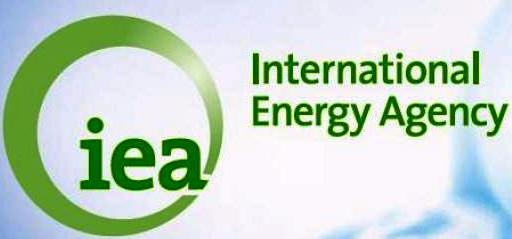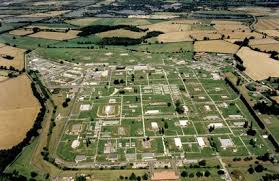
Blog
-
Geiger Readings for December 03, 2014
Ambient office = 100 nanosieverts per hourAmbient outside = 73 nanosieverts per hourSoil exposed to rain water = 70 nanosieverts per hourHoney Crisp Apple from Central Market = 89 nanosieverts per hourTap water = 105 nanosieverts per hourFiltered water = 93 nanosieverts per hour -
Radiation News Roundup December 03, 2014
An Invisible Blanket of Death Covers Fukushima Province Area. commonground.ca
Kyodo News cut off the significant part of the press conference by Dr. Keith Baverstock held in Foreign Correspondents’ Club of Japan on 11/20/2014. fukushima-diary.com
The UK government has signed a cooperation agreement with NuGen “to promote external financing” for the Moorside nuclear power plant in Cumbria. world-nuclear-news.org
-
Nuclear Reactors 181 – International Energy Agency Issues Report on Nuclear Cooperation in the European Union
The International Energy Agency (IEA) has just issued a report that recommends that incentives be offered to support the construction of new nuclear reactors to assist European Union members in reducing their carbon emissions. In its own words, “The IEA is an autonomous organization which works to ensure reliable, affordable and clean energy for its 29 member countries and beyond. The IEA’s four main areas of focus are: energy security, economic development, environmental awareness, and engagement worldwide.”
The IEA report encouraged cooperation across the E.U. on uprates, safety upgrades and extensions of the lifetimes of existing nuclear power reactors in order to achieve the highest safety standards and regulatory stability. The report suggested that appropriate incentives be created for member states who “wish to maintain the nuclear option as part of the energy supply diversity and security”. The report stated that the EU should work to with member states on the problem of disposal of radioactive waste and the creation of regional repositories for permanent waste disposal.
The IEA report praised the E.U. for progress in liberalizing energy markets and said “global leadership on climate change is to be commended, but there remains much room for improvement.” The IEA is lobbying for what they refer to as an “Energy Union” across the whole E.U. There has been integration in the northern and western sections of the E.U. but the report said that much work needs to be done to integrate the rest of the member nations in to the “Energy Union.” The report criticized the energy market distortion that is being caused by regulated prices and rising surcharges and levies for green energy.
In October of 2014, E.U. leaders met and agreed to major climate change and energy targets that should be met by 2030. Now the challenge is to build the legal framework with rules to create a low-carbon system. This transition is going to be difficult because the electricity and transport sectors highly dependent on fossil fuels. The IEA executive director said that the proposed Energy Union should not represent “a buyer’s cartel” but should “feature an integrated energy market and effective climate and energy policies.” She said that the E.U. needed to “better pool its resources” in order to enhance both energy security and competitiveness of its industry in the internal energy market.
The IEA report said that the EU grid and market needed to be able to incorporate electricity generated by variable renewable energy. In addition, almost half of the existing nuclear power reactors in the E.U. will have to be retired in the next ten years which will required a great deal of planning and funding. The report says “Energy security must be placed at the centre of the Energy Union. In order to reduce dependency on one single supplier, the EU must further diversify gas and oil supplies, and cannot afford to reduce its energy options: nuclear, coal and unconventional gas and oil will need to be part of the mix.”
-
Radiation News Roundup December 02, 2014
-
Geiger Readings for December 02, 2014
Ambient office = 83 nanosieverts per hourAmbient outside = 81 nanosieverts per hourSoil exposed to rain water = 101 nanosieverts per hourRed bell pepper from Central Market = 60 nanosieverts per hourTap water = 88 nanosieverts per hourFiltered water = 81 nanosieverts per hour -
Nuclear Weapon 110 – Problems at the Atomic Weapons Establishment in the United Kingdom
The Ministry of Defense (MoD) in the United Kingdom has just order a review of the costs and construction schedule for an important facility intended to enrich uranium to weapons grade for Trident nuclear submarines. Project Pegasus is the name of the billion dollar project being built at the Atomic Weapons Establishment (AWE) in Berkshire. There are serious concerns in the British nuclear industry about rising costs and construction delays. While the MoD and AWE play down the problems, one nuclear expert said that the problems were “extremely serious.” He went on to say, “Certainly, this is an issue that is going to run and run – and, don’t forget, the Government has a golden share, meaning it can re-procure the contract.”
A private sector consortium made up of Serco in the U.K., Lockheed Martin and Jacobs Engineering in the U.S. has a twenty five year management contract to manage the AWE. The “golden share” mentioned in the paragraph above refers to the fact that the U.K. Government has a small stake in the AWE. This golden share allows the Government to outvote the three corporations running the AWE if the national interest of the U.K. is at stake. The U.K. Government can also throw the three companies out the AWE at any time.
The AWE was privatized in 2000 and has had serious problems since then. The Serco corporation was fined about four hundred and forty thousand dollars because of an explosion at AWE. A source within AWE says that “there are always problems there, like corrosion, often caused by the age of the existing facilities.” A spokesperson for the AWE said that “The Pegasus project is kept under regular review. No decisions on changes to the scope have been made.” The MoD responded to a question from the Green Party by saying that the project must meet the departments “requirements while also achieving the optimum balance of performance cost and schedule”.
It has also been reported that the U.K.’s nuclear regulators have been having problems hiring enough inspectors. A research consultant named Dr. David Lowry has written to the Office for Nuclear Regulation demanding to know how they will deal with the shortage of inspectors. The ONR’s principle investigator admitted that there is “increasing competition for scarce nuclear-competent engineers and scientists across the sector, but recruitment is yielding results.” Dr. Lowry is very concerned that “If the Government expands the new build nuclear program, there would be more pressures on staff and even more stress on an already stressed nuclear regulator.”
Nuclear disarmament groups in the U.K. have questioned the need for the Government to spend more than three billion dollars in the next ten years on nuclear weapons when there are social welfare programs being cut. The U.S. is also embroiled in a debate over the need for spending billions of dollars on new nuclear weapons.
Atomic Weapons Establishment:
-
Radiation News Roundup December 01, 2014
Turkey’s Ministry of Environment and Urban Planning has finally approved the environmental impact assessment (EIA) report for the Akkuyu nuclear power plant project. world-nuclear-news.org
Islamic State has a ‘dirty bomb’ says British jihadi, amid claims 40kg of URANIUM was taken from Iraqi university. dailymail.co.uk
-
Geiger Readings for December 01, 2014
Ambient office = 65 nanosieverts per hourAmbient outside = 75 nanosieverts per hourSoil exposed to rain water = 82 nanosieverts per hourRed bell pepper from Central Market = 100 nanosieverts per hourTap water = 119 nanosieverts per hourFiltered water = 99 nanosieverts per hour -
Geiger Readings for November 30, 2014
Ambient office = 65 nanosieverts per hourAmbient outside = 75 nanosieverts per hourSoil exposed to rain water = 89 nanosieverts per hourRed bell pepper from Central Market = 111 nanosieverts per hourTap water = 71 nanosieverts per hourFiltered water = 56 nanosieverts per hour





